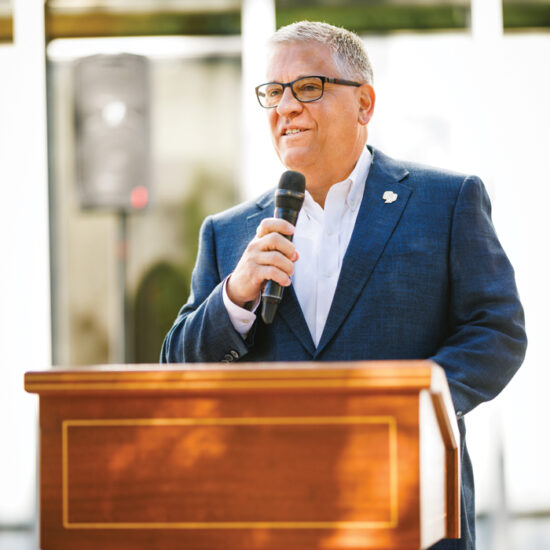Being Good Stewards of Our Place
President Jeffrey D. Armstrong explores Cal Poly’s place in the Central Coast community.
 I recently had an opportunity to consider some Cal Poly initiatives from the perspective of whether the university is being a good steward of our place. Here’s what I mean: Someone is a good steward when they take responsibility for the place that they live in and for their place in the life of that community.
I recently had an opportunity to consider some Cal Poly initiatives from the perspective of whether the university is being a good steward of our place. Here’s what I mean: Someone is a good steward when they take responsibility for the place that they live in and for their place in the life of that community.
Cal Poly is a good steward when we seek to reduce our impact on the natural environment — for example, by producing between 20 and 25% of our electricity through our solar arrays, or through the in-progress Water Reclamation Facility, which will allow us to use treated water for irrigation and thus reduce both fresh water consumption and wastewater output.
We are similarly acting as good stewards when we pursue greater regional cooperation on economic development, trying to help limited resources go farther to increase the number of head-of-household jobs.
The great success we have had in ensuring an excellent pathway for qualified graduates of local high schools to become Cal Poly students, either as first-year students or as transfer students, is another part of taking care of the place where we live. In 2023, we conditionally admitted 100% of such students who started college at Cuesta College or Allan Hancock College, and more than 90% became Cal Poly students!
Taking responsibility for our place in the life of the Central Coast is the second part of how I understand stewardship. On this side I include our efforts to build and maintain good relations with the yak titʸu titʸu yak tiłhini Northern Chumash Tribe, whose unceded lands Cal Poly sits upon. These efforts have their most concrete manifestation in the yakʔitʸutʸu student housing complex, and also include our proposal that 12,000 acres of land currently owned by PG&E as part of the Diablo Canyon Power Plant be transferred to tribal control (with provisions for public access) when the plant is decommissioned.
Cal Poly is trying to take responsibility for our place in the life of where we live, and to do the right thing by all the interested parties.
I also include Cal Poly’s more than 20-year record of increasing the number and share of students living on campus faster than enrollment has grown. Today we are poised to begin a $1.2 billion, decade-long series of building and renovation projects that will add 3,000 to 4,000 new beds and renovate hundreds more.
Third, I include our effort to increase faculty and staff housing on campus. We have 70 units currently, are breaking ground on 30 more this spring, and are in the early stages of examining whether we can add 200 more in the future.
What holds these different initiatives together is that Cal Poly is trying to take responsibility for our place in the life of where we live, and to do the right thing by all the interested parties.
This issue of Cal Poly Magazine includes several stories of people and projects that represent good stewardship: for example, the astonishing work of His Excellency Abdul Aziz Al Ghurair (Industrial Engineering ’77) in making higher education accessible for some 98,000 Emirati and Arab youth since 2015, the large number of Mustangs who have gone on to lives of public service as elected officials, professor Patrick Lin’s work on applying ethics in space, and a class in which students care for unhoused neighbors on the Central Coast.
Each of these stories exemplifies how Mustangs take responsibility for the places where they live and their places in the life of those communities. We should all be Cal Poly Proud!


